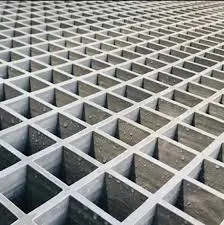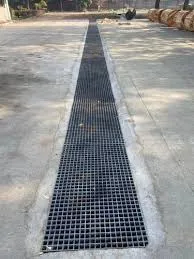
-
 Afrikaans
Afrikaans -
 Albanian
Albanian -
 Amharic
Amharic -
 Arabic
Arabic -
 Armenian
Armenian -
 Azerbaijani
Azerbaijani -
 Basque
Basque -
 Belarusian
Belarusian -
 Bengali
Bengali -
 Bosnian
Bosnian -
 Bulgarian
Bulgarian -
 Catalan
Catalan -
 Cebuano
Cebuano -
 China
China -
 China (Taiwan)
China (Taiwan) -
 Corsican
Corsican -
 Croatian
Croatian -
 Czech
Czech -
 Danish
Danish -
 Dutch
Dutch -
 English
English -
 Esperanto
Esperanto -
 Estonian
Estonian -
 Finnish
Finnish -
 French
French -
 Frisian
Frisian -
 Galician
Galician -
 Georgian
Georgian -
 German
German -
 Greek
Greek -
 Gujarati
Gujarati -
 Haitian Creole
Haitian Creole -
 hausa
hausa -
 hawaiian
hawaiian -
 Hebrew
Hebrew -
 Hindi
Hindi -
 Miao
Miao -
 Hungarian
Hungarian -
 Icelandic
Icelandic -
 igbo
igbo -
 Indonesian
Indonesian -
 irish
irish -
 Italian
Italian -
 Japanese
Japanese -
 Javanese
Javanese -
 Kannada
Kannada -
 kazakh
kazakh -
 Khmer
Khmer -
 Rwandese
Rwandese -
 Korean
Korean -
 Kurdish
Kurdish -
 Kyrgyz
Kyrgyz -
 Lao
Lao -
 Latin
Latin -
 Latvian
Latvian -
 Lithuanian
Lithuanian -
 Luxembourgish
Luxembourgish -
 Macedonian
Macedonian -
 Malgashi
Malgashi -
 Malay
Malay -
 Malayalam
Malayalam -
 Maltese
Maltese -
 Maori
Maori -
 Marathi
Marathi -
 Mongolian
Mongolian -
 Myanmar
Myanmar -
 Nepali
Nepali -
 Norwegian
Norwegian -
 Norwegian
Norwegian -
 Occitan
Occitan -
 Pashto
Pashto -
 Persian
Persian -
 Polish
Polish -
 Portuguese
Portuguese -
 Punjabi
Punjabi -
 Romanian
Romanian -
 Russian
Russian -
 Samoan
Samoan -
 Scottish Gaelic
Scottish Gaelic -
 Serbian
Serbian -
 Sesotho
Sesotho -
 Shona
Shona -
 Sindhi
Sindhi -
 Sinhala
Sinhala -
 Slovak
Slovak -
 Slovenian
Slovenian -
 Somali
Somali -
 Spanish
Spanish -
 Sundanese
Sundanese -
 Swahili
Swahili -
 Swedish
Swedish -
 Tagalog
Tagalog -
 Tajik
Tajik -
 Tamil
Tamil -
 Tatar
Tatar -
 Telugu
Telugu -
 Thai
Thai -
 Turkish
Turkish -
 Turkmen
Turkmen -
 Ukrainian
Ukrainian -
 Urdu
Urdu -
 Uighur
Uighur -
 Uzbek
Uzbek -
 Vietnamese
Vietnamese -
 Welsh
Welsh -
 Bantu
Bantu -
 Yiddish
Yiddish -
 Yoruba
Yoruba -
 Zulu
Zulu
Feb . 17, 2025 15:53
Back to list
grp piping system
Glass Reinforced Plastic (GRP) piping systems are a vital component in various industries, offering both durability and efficiency. Designed to meet the rigorous demands of modern industrial applications, these systems are engineered to provide superior performance, withstand harsh environmental conditions, and reduce maintenance costs. This article explores the features, advantages, and applications of GRP piping systems, emphasizing their importance in industrial settings.
One of the authoritative strengths of GRP piping systems lies in their compliance with international standards. Many reputable manufacturers ensure that their GRP pipes adhere to ISO, ASTM, and other relevant standards, reinforcing their reliability and quality. Such compliance guarantees that clients receive a product vetted for safety and efficacy, enhancing confidence in their investment. Trust is further solidified by the environmental benefits GRP systems offer. These pipes contribute to sustainability by reducing the carbon footprint associated with their production and lifecycle. Unlike metal pipes, GRP pipes do not require extensive energy resources nor emit harmful by-products during manufacturing. This eco-friendly attribute makes them a preferred choice for companies aiming to align with global sustainability goals. In assessing expert opinions and user experiences, the consensus is overwhelmingly positive. Industry professionals highlight the cost-effectiveness of GRP piping systems, often citing reduced lifecycle costs as a major advantage. Maintenance specialists appreciate their minimal upkeep requirements, attributing fewer system downtimes to their robust and resistant nature. These factors combined with their exceptional performance metrics make GRP piping systems a prudent choice for businesses looking to enhance system efficiency and reliability. The future of industrial piping is undoubtedly leaning towards materials that offer longevity and resilience. GRP piping systems stand at the forefront of this evolution, promising a blend of high performance, environmental responsibility, and financial prudence. As industries continue to face the challenges of modernization and environmental accountability, GRP piping systems provide a practical and viable solution. Companies that prioritize quality, endurance, and eco-friendliness will find GRP piping systems to be indispensable in achieving their operational goals.


One of the authoritative strengths of GRP piping systems lies in their compliance with international standards. Many reputable manufacturers ensure that their GRP pipes adhere to ISO, ASTM, and other relevant standards, reinforcing their reliability and quality. Such compliance guarantees that clients receive a product vetted for safety and efficacy, enhancing confidence in their investment. Trust is further solidified by the environmental benefits GRP systems offer. These pipes contribute to sustainability by reducing the carbon footprint associated with their production and lifecycle. Unlike metal pipes, GRP pipes do not require extensive energy resources nor emit harmful by-products during manufacturing. This eco-friendly attribute makes them a preferred choice for companies aiming to align with global sustainability goals. In assessing expert opinions and user experiences, the consensus is overwhelmingly positive. Industry professionals highlight the cost-effectiveness of GRP piping systems, often citing reduced lifecycle costs as a major advantage. Maintenance specialists appreciate their minimal upkeep requirements, attributing fewer system downtimes to their robust and resistant nature. These factors combined with their exceptional performance metrics make GRP piping systems a prudent choice for businesses looking to enhance system efficiency and reliability. The future of industrial piping is undoubtedly leaning towards materials that offer longevity and resilience. GRP piping systems stand at the forefront of this evolution, promising a blend of high performance, environmental responsibility, and financial prudence. As industries continue to face the challenges of modernization and environmental accountability, GRP piping systems provide a practical and viable solution. Companies that prioritize quality, endurance, and eco-friendliness will find GRP piping systems to be indispensable in achieving their operational goals.
Next:
Related Products









